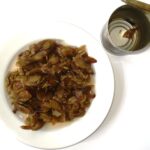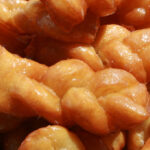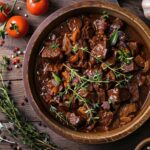South African cuisine is a melting pot of diverse flavors and cultural influences, and within this rich tapestry lies the iconic dish known as bunny chow. Born in the bustling streets of Durban, bunny chow has become an integral part of South Africa’s culinary heritage. This flavorful street food, consisting of a hollowed-out loaf of bread filled with delicious curry, encapsulates the country’s history, fusion of cultures, and love for bold and aromatic flavors. In this article, we explore the history and flavors of South African bunny chow, a dish that has captured the hearts and palates of locals and visitors alike.
- The Origins and Cultural Significance:
Bunny chow traces its origins back to Durban’s Indian community in the 1940s. It is said to have emerged as a convenient and affordable way to serve curry to laborers and workers, particularly those of Indian descent, who faced segregation and limited access to establishments during apartheid. The dish was originally known as “bunny” or “bani chow” (meaning curry), and it quickly gained popularity due to its portability and satisfying flavors.
- The Construction of Bunny Chow:
The traditional bunny chow consists of a loaf of bread, typically a white bread loaf, hollowed out and filled with a generous serving of curry. The loaf is often divided into quarters, allowing for easy sharing or individual servings. The bread absorbs the flavors of the curry, creating a unique and satisfying combination of textures and tastes.
- Flavorful Curry Varieties:
Bunny chow offers a diverse range of curry fillings, catering to various preferences and dietary requirements. Chicken, mutton, beef, and vegetarian options are common, each boasting their own distinctive flavors. The curries are typically prepared with aromatic spices like cumin, coriander, turmeric, and chili, creating a symphony of flavors that are both robust and well-balanced.
- Heat Levels and Condiments:
South Africans take their spice seriously, and bunny chow is no exception. The heat level of the curry can vary, ranging from mild to fiery-hot, depending on personal preference. To complement the flavors and adjust the spiciness, condiments such as sambals (fresh tomato and onion relish), pickles, and chutneys are often served alongside the bunny chow. These condiments add an extra burst of flavor and freshness to the dish.
- Bunny Chow Beyond Durban:
While bunny chow originated in Durban, its popularity has spread throughout South Africa and beyond. Today, it can be found in various regions and cities, each adding its own unique twist to the dish. In Johannesburg, for example, bunny chow is often enjoyed with additional fillings like grated cheese or topped with a fried egg, creating a fusion of flavors.
South African bunny chow stands as a testament to the country’s culinary diversity, cultural fusion, and creative spirit. Its humble origins as a convenient street food have transformed it into a beloved dish, enjoyed by people from all walks of life. The combination of a flavorful curry filling, housed in a bread loaf that soaks up the deliciousness, creates a truly satisfying culinary experience. As you explore South Africa’s vibrant food scene, don’t miss the opportunity to savor the iconic bunny chow—an embodiment of history, community, and the tantalizing flavors that make South African cuisine so remarkable.








